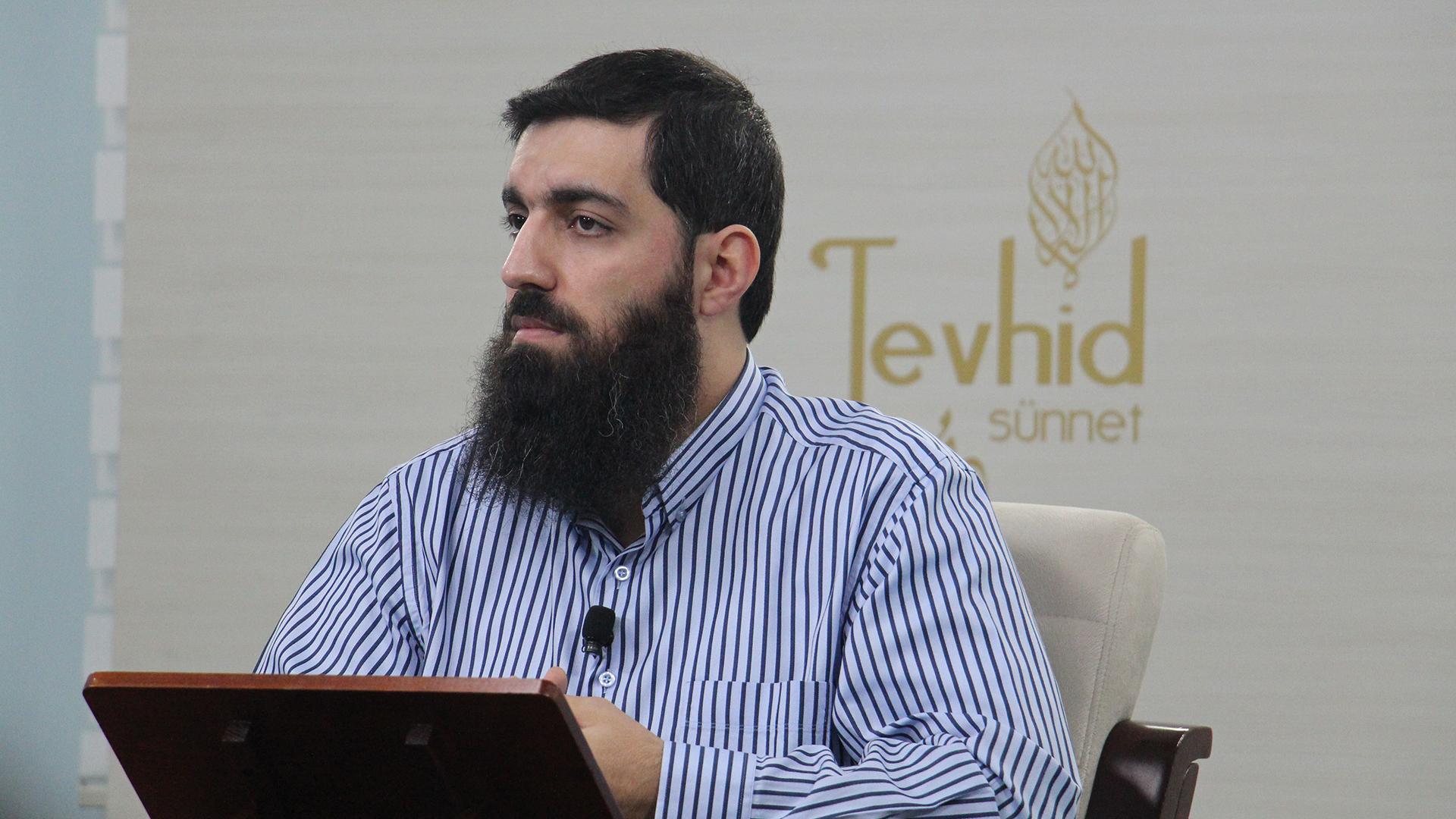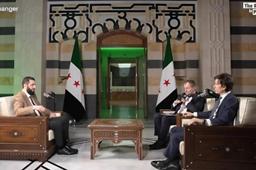
International Radicalism Observatory
 +905534025560
+905534025560 info@urad.com.tr
info@urad.com.tr 06560, Söğütözü Cad. No:43 Ankara, Turkiye
06560, Söğütözü Cad. No:43 Ankara, Turkiye
Association

Introduction
Let’s start with a historical event: On July 4, 2014, Abu Bakr al-Baghdadi, the leader of the Islamic State of Iraq and the Levant (ISIL), wearing a black robe, a black turban, and a long beard, walked calmly into the Grand Nur Mosque in Mosul. Friday was the beginning of Ramadan, the month of patience. A large crowd carefully followed him. He walked calmly and confidently towards the pulpit. With a confident voice, he turned to the congregation and declared, “Allah has honored your mujahideen brothers with victory.” After many years of jihad, patience, and fighting Allah’s enemies, Allah has guided and strengthened them to achieve their goals.” Baghdadi said that “the foundation of the religion is the Qur’an, which guides people, and the sword, which leads to victory.” “Allah has commanded us to fight His enemies and wage jihad in His way to establish the religion,” he said. He also asserted that Muslims must establish the caliphate, citing centuries of wasted time. He declared that he had taken on a heavy responsibility and a lofty task, saying, “I do not promise my subjects the prosperity and abundance that kings or leaders promise, but what Allah promises to His faithful servants.” Baghdadi then declared the caliphate and ordered all Muslims to pledge allegiance and obedience to him. [i] Thus, he re-established the caliphate, abolished in 1924!
The ISIS leader’s declaration of the caliphate has once again brought Salafism to the global agenda. In fact, since Al-Qaeda’s attack on the Twin Towers on September 11, 2001, people have been debating Salafism, its definition, and its origins for a long time. The debates have centered around the questions: “Who is considered a Salafi?”, “Is Salafism a religious sect like Hanafism and Shafism?”, “Is it a social or political movement that emerged in the late 19th and early 20th centuries?” or “Is it merely a theological category?”; however, the literature on this movement and studies on Islamism often misunderstand both the term Salafi and the people it describes, failing to explain the concept and its framework adequately. Most studies trace the origins of Salafi thought back to Ahmad bin Hanbal and the Ahl al-Hadith, constructing a sacred history from these sources. However, the invention of Salafism, or the emergence of individuals who identify with the Salafi method, occurred recently. Ibn Taymiyya used it, but the concept gained widespread popularity in the late 18th and early 19th centuries, a time when the Islamic world was losing ground. The concept’s hinterland and framework expanded significantly in the 20th century, and many groups with a focus on jihad, politics, or education began to operate under the umbrella of Salafism.
The late 1950s translation activities in Turkey led to the emergence of Salafist thought. This process, which started with the translation of books by activists such as Sayyid Qutb and Mawdudi, who are among the architects of radical Islamist thought, gained more clarity in the 1980s. After 9/11, Salafism reached its peak with the Syrian civil war. This ongoing war has led many Salafist groups to invade Syrian territory and become involved in the conflict. This process has once again underscored the importance of comprehending religious terrorist organizations, jihadi Salafi structures, and Salafi preachers, all of which have become significant security concerns.
This study aims to reveal and analyze the profile of Halis Bayancuk with the pseudonym Abu Hanzala, the founder of the Tawhid and Sunnah Community, which has been operating in different provinces of Turkey since 2007. In addition, the article aims to reveal and analyze the profile of Halis Bayancuk, who is also known as “the leader of Al-Qaeda in Turkey” or “ISIS is our Muslim brother. We consider any attack on them as an attack on us.” The article examines Abu Hanzala’s identity, the environment in which he grew up, his educational background, the influential figures in his life, and the resulting ideological framework and Salafism he represents.
The Life of Abu Hanzala (Halis Bayancuk)
Halis Bayancuk, originally from Bingöl, was born in 1984 to a Kurdish father who belonged to Hezbollah, a militant, Islamist, and Sunni religious group that operates in eastern and southeastern Turkey and is predominantly Kurdish. [ii] Abu Hanzala’s father was Hacı Bayancuk, code-named “Hafiz”, who was convicted of Kurdish Hezbollah and released from prison in 2016. In 1992, Hacı Bayancuk was in charge of the organization’s military wing and was among those who were mentioned for the leadership of the organization after the death of Hüseyin Velioğlu.[iii]
Abu Hanzala grew up in Hezbollah, one of Turkey’s enigmatic radical organizations. Especially during his secondary school years, he participated in educational programs in mosques where the Hezbollah organization was active and received his first religious education. In his own words, he completed his secondary and high school education in the Turkish Republic’s schools, which he described as the “modern temples of servitude to Taghut.” Abu Hanzala graduated from Diyarbakır Imam Hatip High School, received ideological and religious education from Hezbollah, which he joined during his middle and high school years under the influence of his father.[iv]
Several figures influenced Abu Hanzala’s world of thought. One of them is Mehmet Göktaş, who is close to Hezbollah’s understanding of religion. Because of his father’s position in the Hezbollah organization, Abu Hanzala and his family had to constantly change cities and move to Kayseri, where he received religious lessons from Göktaş. Abu Hanzala stated, “We had to constantly change cities because my father was in demand.” In Kayseri, I met Mehmet Göktaş, a well-known teacher there. During my stay there, I requested to take lessons from him... In this regard, he helped me a lot. We prayed for him constantly.”[v] Göktaş[vi], who was also the editor-in-chief of Doğruhaber newspaper, which is close to the Hezbollah community, has books such as ‘Cihad Zikir Ayrılmazlığı’, ‘Gençlerle Tevhid Dersleri’, ‘İslam’nın Genç Davetçilerine’, ‘Mekke’de Müslüman Olmak’, which are in line with Hezbollah’s religious discourse.
Another influential figure in Abu Hanzala’s world of thought is Mullah Anwar Kılıçarslan. Teachers affiliated with Kurdish Hezbollah include Union of Scholars and Madrasahs President Mullah Anwar. Abu Hanzala, who had to move to Istanbul while he was in high school, took lessons from Mullah Anwar in the same apartment building. In his own words, “I stayed in Istanbul for about a year. We lived in the apartment next door to a well-known mullah from the east. Since the crackdown on the Islamic community intensified and most of our neighbors were wanted, we lived in four walls. During this time, I took lessons from Mullah Anwar.” Molla Anwar is one of Abu Hanzala’s most influential Islamic methodology instructors. Molla Anwar is also familiar with Said Nursi’s (1876-1960) books, which are among Hezbollah’s main reference texts.[vii]
In the early 2000s, Abu Hanzala was forced to leave Istanbul and returned to Diyarbakır, where he began his high school education. During this period, he started taking lessons from a teacher who graduated from the Tillo madrasah, one of the famous madrasahs of the East, and was affiliated with the Said-i Nursi Community; he read the Risale-i Nur.[viii]
It is important to emphasize here that Said Nursi, who came from the Kurdish madrasa system, is not only the author of the original religious texts, Risale-i Nur but also the founder of the Nurist movement in Turkey. Today, the Nurculuk umbrella encompasses not only the Kurdish and Islamist Med-Zehra School[ix], which emphasizes Said Nursi’s Kurdish identity, but also the Aczimendi sect, which draws attention with their black robes, long beards, the scepter they never let go of their hands, and their unique clothing style.[x] Most religious groups operating in Turkey revere Said Nursi and read Risale-i Nur’s works. In various ways, the Risale-i Nur corpus has fed Hussein Velioglu, the leader of the radical Islamist organization Hezbollah, and Abu Hanzala, the founder of the Salafist Tawhid and Sunnah Jamaat.
During this period, Abu Hanzala read the works of Ibn Taymiyya, regarded as the ‘Father of Salafism’, and Sayyid Qutb[xi], heavily influenced by the ideas of Muhammad bin Abdul Wahhab, particularly his tafsir Fi Zilal’il Qur’an. Abu Hanzala grew up in the atmosphere of the Kurdish Hezbollah’s radical Islamist interpretation of religion, and from that point on, he began to evolve from radical Islamism to Jihadi Salafism.[xii]
After completing his high school education in Turkey, Abu Hanzala, with the guidance of his father, traveled to Egypt with six friends to specialize in religious education. Abu Hanzala enrolled at Al-Azhar University but gave up on studying there and stayed in Egypt for 4 years and 8 months. During this period, he encountered Salafist groups operating in Egypt, such as the Ikhwan al-Muslimin or Takfir wa al-Hijrah. Abu Hanzala refused to study at Al-Azhar because it was “an education under the control of the Taghut, under the supervision of the Bel’ams approved by them,” and limited himself to participating in Salafist activities in masjids. He lived in the same neighborhood as people from Azerbaijan and Dagestan, and he was active in Salafist groups, according to his own words. [xiii]
Abdulkadir Polat, a young Salafi preacher, claims that Abu Hanzala studied in Egypt at Abu Hamid’s madrasa, where Abu Muhammad Maqdisi, Sayyid Imam Sharif, or Dr. Fadl, alias Abdulkadir bin Abdulaziz, one of the most significant representatives of the Jihadi movement, also had an influence. Abdulaziz was born in 1950 and raised in Egypt. In the 1970s, he was a student at Cairo University’s Faculty of Medicine when he met Ayman al-Zawahiri, who became his close friend. In 1985, he left his country with Zawahiri. In 1987, Abdulaziz assumed leadership of the Islamic Jihad organization in Peshawar, a movement that originated in jihad camps and greatly influenced Zawahiri’s ideas. [xiv] Abdulaziz, who was among the high-ranking figures in the early period of Al-Qaeda, focused on the theological and practical meanings of jihad.[xv] He authored a massive work, al-Umdah, which became the foundational text of the jihadist tendency. Abdulaziz has stated that he wrote al-Umdah as a manual for the al-Qaeda organization’s training camps. [xvi] In his speech titled “The Demand for Knowledge and Ignorance,” which is available online, Abu Hanzala mentions that Abd al-Qader bin Abdulaziz was born and raised in Egypt, participated in the Afghan jihad, was one of the most important scholars of the Afghan jihad, was arrested in Yemen and later handed over to the Egyptian government, and was a Salafist and jihadi personality.[xvii] In addition to this commentary by Abu Hanzala, a book titled “The Menheci of Ahli Sunnah and the Principles of Jihad,” prepared by selecting some topics from “Al-Umda,” was published by Furkan Publications, which belongs to the Abu Hanzala group.
While Abu Hanzala was in Egypt, Musa Olgaç, also known as Musa Abu Ja’far, was another influential figure in his world of thought. Born in 1974 in Mardin, Olgaç was in close contact with Salafists such as Murat Gezenler and other Salafist groups operating in Turkey. In 1992, Olgaç traveled to Damascus and studied religion for three years at a madrassa called Al-Furqan. He then traveled to Egypt and enrolled in the Faculty of Sharia at Al-Azhar University, where he studied for four years and graduated. In Egypt, they arrested Olgaç, deported him, and forced him to return to Turkey. He did dawah work in Turkey for a short time, and in 2011, he traveled to Afghanistan and joined the ‘jihad’ there. After two and a half years in Afghanistan, he traveled to Syria and joined Al-Qaeda. [xviii] While in Egypt, Olgaç ,[xix] who has an arrest warrant in Turkey for his opposition to Atatürk, the Republic, and secularism, had a close relationship with Abu Hanzala while in Egypt. Olgaç, who later had an intellectual disagreement with Abu Hanzala, criticizes him as ‘radical’ and ‘takfirist’.[xx] He is one of the qadi of the Hayat Tahrir al-Sham (HTS) organization and is currently active in the Idlib region of Syria.[xxi]
While in Egypt, Abu Hanzala had difficulties with Salafist groups close to Saudi Arabia. Salafist groups close to Saudi Arabia accused Abu Hanzala of being a “Kharijite” and a “takfirist” after he printed and distributed the book ‘Al-Jami Fi Talebi Ilm al-Sharif’ by Abdulkadir bin Abdulaziz, one of the prominent founders of the Islamic Jihad Jama’at, whose leader was Ayman ez-Zawahiri. In 2006, Abu Hanzala came to Turkey and could not return to Egypt due to the complaints filed against him.[xxii]
In 2007, Abu Hanzala initiated Salafist da’wah activities in the Bayrampaşa district of Istanbul, referring to the Turkish state’s mosques as Masjid al-Dirar. [xxiii] He began establishing offices under the name “Tawhit Masjids” in various cities, including Istanbul, Bursa, and Van, to form his own community.[xxiv]
The Turkish public first heard Abu Hanzala’s name when they accused him of being the “leader of Al-Qaeda in Turkey” and subsequently arrested him. Abu Hanzala spent 4 years in prison, 13 months in the first, 2 years in the second, and 10 months in the third, following his arrest and imprisonment in 2008, 2011, and 2014.
After 2014, allegations emerged that Abu Hanzala was the leader of the Islamic State of Iraq and the Levant (ISIL) in Turkey. They detained and arrested him again on July 23, 2015, as part of an ISIS operation, but released him on March 24, 2016. On August 26, 2016, authorities detained him for the fifth time before releasing him. On March 8, 2017, authorities detained him for the sixth time after he accused the governor’s office employees of being “Mushriks” and threatened them with the words “We will not stand idle either” due to the cancellation of his scheduled panel speech in Ankara.[xxv] On May 30, 2017, authorities detained Abu Hanzala for the seventh time, accusing him of being a senior ISIS leader, and again on June 7, 2017. Abu Hanzala, who has often been on trial for life imprisonment, was released from prison at his first hearing on April 9, 2020; however, an arrest warrant was issued for him again before he left prison, and he was arrested. Abu Hanzala spent nearly three years in prison before his release on July 10, 2023.[xxvi]
Abu Hanzala came to public attention in 2015 with the Eid prayers he led at the Ömerli Dam in Çekmeköy, Istanbul. Since 2014, Salafist groups in Turkey have begun to gather for Eid prayers and to present their views in sermons. In 2014, the Eid prayer led by Mustafa Yağbasa, one of the most important preachers of Salafist thought in Turkey, was publicized as a call for jihad by Salafist organizations. Abu Hanzala led the Eid prayer in 2015. In his speech, Abu Hanzala, who defines himself as a ‘Messenger of Islam’, stated that the Republic of Turkey has an idolatrous system and is; therefore, a taghut. “You say, ‘We educate children secularly, democratically, and in accordance with the Constitution. We see this as blasphemy and idolatry, so we do not send our children to your schools.” Bayancuk said, “Believers fight for Allah, and disbelievers fight for the Taghut. We will not serve in the army after labeling you as ‘Taghut’.” Again, Bayancuk said, “We do not vote. Because whoever is the creator, the right to rule belongs to him. When you compete with the Creator for rule, you lose.” Bayancuk shared their political stance with other Salafist organizations and Turkish public opinion.[xxvii]
Founded by Abu Hanzala, the Tawhid and Sunnah Jamaat is one of the most influential and organized Salafist groups in Turkey, operating through its ‘Ribat’ (School for Children), its monthly ‘Tawhid Magazine’, its bimonthly ‘Tawhid Children’ magazine, and its ‘Tawhid Masjids’ in different cities. The Brotherhood continues to propagate its political Salafist interpretation of religion through video recordings and street interviews on the Internet.[xxviii]
Conclusion and Evaluation
The main purpose of this article is to analyze the Jihadi Salafi human profile formation process through the example of Abu Hanzala (Halis Bayancuk). Salafist thought, the seeds of which were sown in Turkey at the end of the 1950s, started to become visible in the 1980s, took flesh and bones in the early 2000s, and reached its peak with the Syrian Civil War. The process that started with the translation of the books of thinkers such as Sayyid Qutb or Mawdudi weakened radical Islamist thought on the one hand, and on the one hand facilitated the grounding and strengthening of Salafi thought in its different dimensions. In this framework, many Salafi actors operate on a wide spectrum, from the most radical to the most moderate.
Founded by Halis Bayancuk, who bears the name Abu Hanzala, the Tawhid and Sunnah Jamaat is one of the most organized Salafist groups operating in Turkey. Launched in 2007, the group appears to have a jihadi tendency in general. Its founder, Abu Hanzala, also has a jihadi-salafi profile. Factors such as his geographical location, Hezbollahist education, involvement in Jihadi Salafist groups during his education in Egypt, and exposure to Jihadi-Salafist literature have shaped his profile. During his childhood, the people he encountered almost prepared him step by step for jihadi Salafism.
However, it is worth underlining that Abu Hanzala was born in a region where Salafism historically originated and where the influence of Ibn Taymiyah was quite intense. Although the jihadi Salafist movement, which we have been talking about frequently since the early 2000s, is new in Turkey, the idea of Salafism has historical roots in this region. Ibn Taymiyya, considered the father of Salafism, was born in Harran in 1263, five years after the fall of Baghdad and the de facto end of the Abbasid Caliphate. At the age of six, he moved to Damascus to escape the persecution of the Mongol armies. Even in the 19th century, the mosques and libraries of Damascus housed Ibn Taymiyah’s books, emphasizing tawheed, the expression of God’s oneness, and jihad, the act of struggle against infidels. According to Weismann,[xxix] Salafist thought re-emerged in the Damascus region from 1880 onwards. The anger of reformists in Ottoman Damascus, such as Abdurrezzak al-Bitar (1837-1916) or Jamalettin al-Qasimi (1866-1914), against the Sunni ulema and Sufi sheikhs, who served as the link between the state and the people, influenced the re-emergence of Salafism in this region during the late Ottoman period. The alliance between the Ottoman Empire and Sufi structures, which were part of popular Islam, disturbed the reformists of the period and led them to new searches. This search led to the resurgence of Salafist thought as a theological expression of dissatisfaction with the Ottoman Empire. Weismann’s historical background also explains why quite radical Islamist groups, such as the Turkish Hezbollah or the jihadi Salafists, have mostly flourished in this geography. In this context, the emergence of Abu Hanzala is consistent with Weismann’s perspective.
Ebu Hanzala's background, education, and the figures who influenced him are important for understanding and recognizing fringe Jihadist-Salafi thought and structures. Having grown up within Hezbollah, been present in various cities in Turkey, received lessons from different figures, and been exposed to different shades of fringe Jihadist-Salafi perspectives during his education in Egypt, he returned to Turkey and established his own group, continuing his fringe Jihadist-Salafi rhetoric. It is also evident that arrests and detentions have not led to a change in this trajectory. The question that needs to be asked is: How does radical, extreme, and consistently fringe Jihadist-Salafi thought find a foothold in this country? What are we missing, what are we overdoing, what are we doing right, and what are we doing wrong? Answering these questions will also indicate what should and should not be done.
It is known that every radical thought produces a corresponding radicalism. Secularism’s practices, which aim to completely exclude religion from public life, have significantly contributed to the emergence and strengthening of Jihadist-Salafist movements in Turkey. While religious radicalism can be dangerous and harmful, radical and extreme ideologies, along with ideologized thoughts that contradict core values, can also pose significant threats. From this perspective, it is important to highlight the following points: In a world where religion as a source of reference has become a security problem, Turkey needs a new religious policy beyond secularism. Religion, which sociologically contributes to social solidarity and integration, can also be the cause of conflicts and oppression, regardless of its justification. History provides many examples of this. The factors that have led our people, who associate Islam with moderation, to succumb to structures where radical ideas thrive must be addressed and eliminated.
_______________________________________________________________________________________________________________________________
[i] Shiraz Maher, Salafi-Jihadism: The History of an Idea (Oxford: Oxford University Press, 2016), 3; Gülşen Topçu, “IŞİD Lideri Bağdadi Musul’da Hutbe Verdi”, Anadolu Ajansı (07 Mayıs 2014).
[ii] Senem Aydın - Ruşen Çakır, “Turkey: A sustainable Case of de-Radicalisation?”, Islamist Radicalisation The Challenge For Euro Mediterranean Relations (Brussels: Centre for European Policy Studies, 2009), 101.
[iii] Ruşen Çakır, Derin Hizbullah İslamcı Şiddetin Geleceği (İstanbul: Metis Yayınları, 2023).
[iv] Ebu Hanzala, “Cezaevi Röportajı”, Tevhid Dergisi Cezaevi Özel Sayısı (Ocak 2015), 7.
[v] Hanzala, “Cezaevi Röportajı”, 7.
[vi] Haber Merkezi, “Mehmed Göktaş: Hizbullah Camiasının Temsil Edilmediği Hiçbir Çözüm Süreci, Hiçbir Anlaşma Geçerli Değildir”, Din, İslami Analiz (Ekim 2014).
[vii] Mehmet Kurt, Kurdish Hizbullah in Turkey: Islamism, Violence and the State (London: Pluto Press, 2017), 17.
[viii] Hanzala, “Cezaevi Röportajı”, 8.
[ix] Fulya Atacan, “A Kurdish Islamist Group in Modern Turkey: Shifting Identities”, Middle Eastern Studies 37/3 (2001), 112.
[x] Hulusi Şentürk, Türkiye’de İslami Oluşumlar ve Siyaset (İstanbul: Çıra, 2011), 568.
[xi] Quintan Wiktorowicz, “Anatomy of the Salafi Movement”, Studies in Conflict & Terrorism 29/3 (2005), 222.
[xii] Hanzala, “Cezaevi Röportajı”, 9.
[xiii] “Ebu Hanzala (Hâlis Bayancuk) ile Röportaj | Furkân bin Abdullah [2013]”, haz. Dâru’l Hilâfeti’l Aliyye Medresesi.
[xiv] Montasser Al-Zayyat, The Road to Al-Qaeda: The Story of Bin Laden’s Right-Hand Man, çev. Ahmed Fekry (Pluto Press, 2004), 18-19.
[xv] Lawrence Wright, “The Rebellion Within”, The New Yorker, (23 Mayıs 2008).
[xvi] [xvi] Fawaz A. Gerges, “Op-Ed: The three manifestos that paved the way for Islamic State”, Los Angeles Times, (15 Nisan 2016).
[xvii] “İlim Talebi ve Cehalet”, haz. Halis Bayancuk.
[xviii] Abdussamed Dağül, “Duyuru - Abdussamed Dağül, Gündemle Alakalı Musa Hoca ile Röportajı” (21 Haziran 2023.
[xix] Haber Merkezi, “Atatürk ve cumhuriyeti hedef alan Musa Ebu Cafer, İçişleri Bakanlığı’nın terör listesinde El Kaide üyesi olarak aranıyor”, Haber, T24 (12 Şubat 2022).
[xx] Onur Güler, Ortadoğu’yu Savunmak yahut Işid/Daeş Hukuku (İstanbul: Step Ajans, 2021), 85.
[xxi] Onur Güler, Ortadoğu’yu Savunmak yahut Işid/Daeş Hukuku (İstanbul: Step Ajans, 2021), 85.
[xxii] “Ebu Hanzala (Hâlis Bayancuk) ile Röportaj | Furkân bin Abdullah [2013]”.
[xxiii] “Ebu hanzala Mescidi Dirar”, haz. muaz036.
[xxiv] Doğu Eroğlu, “‘Ebu Hanzala’: IŞİD’in ‘Türkiye emiri’ değil, vaizlerin en etkilisi”, Haber (11 Kasım 2017).
[xxv] Helin Şahin, “‘Ebu Hanzala’ kod adlı Halis Bayuncuk gözaltına alındı”, Haber (08 Mart 2017).
[xxvi] Sema Kızılarslan, “Yedi Yıl Sonra Ömerli hutbesi: Cihat Çağrısı Var mı, Yok mu?”, Medyascope (blog), 23 Kasım 2021.
[xxvii] Haber Merkezi, “‘Ömerli’de IŞİD’den bayram namazı’ iddiası!”, www.haberturk.com (19 Temmuz 2015).
[xxviii] Diyanet İşleri Başkanlığı, Dini Sosyal Teşekküller, Geleneksel Dini-Kültürel Oluşumlar ve Yeni Dini Oluşumlar, Gizli (Diyanet İşleri Başkanlığı, ts.) (Diyanet İşleri Başkanlığı).
[xxix] Itzchak Weismann, Taste of Modernity: Sufism, Salafiyya, and Arabism in Late Ottoman Damascus (Leiden: Brill, 2000), 264-305.

Oğuz Demir
19/03/2025

Abdullah Denikul
17/02/2025

Hilmi Demir
14/02/2025

Hilmi Demir
27/12/2024

Latife Sümeyye Uslu Cönger
25/12/2024